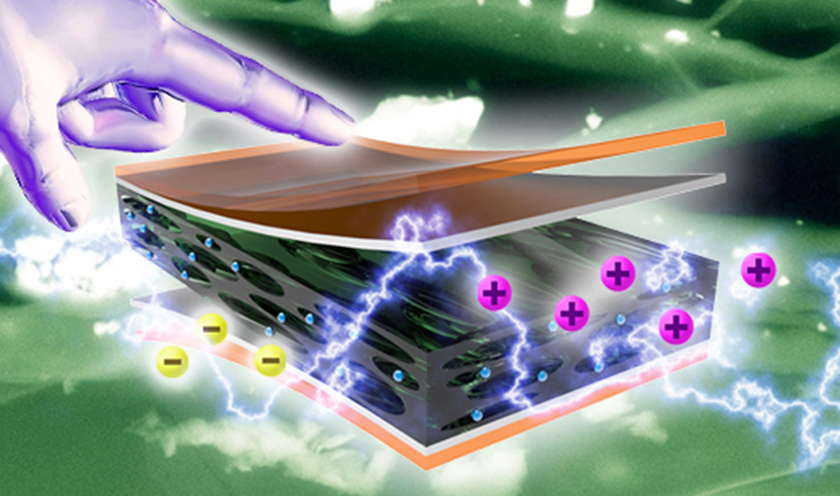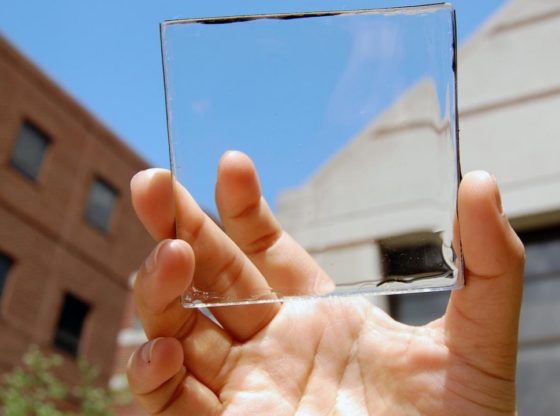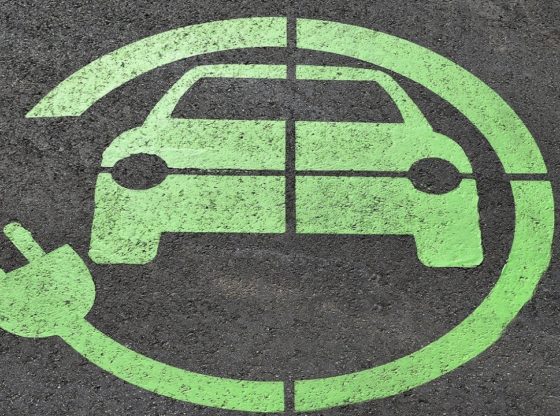Would it not be handy to be able to charge your smartphone while moving around during everyday activities?

Michigan State University researchers have created a new way to harvest energy from human motion, using a film-like device that is able to convert human motion into battery power. This nanogenerator device can be used to convert kinetic energy into electricity that can be used to power a smartphone or other wearable devices.
The concept would translate simple finger movements into electricity to charge our portable electronics in the future. By pressing or touching the nanogenerator lightly, it was possible to keep the electronics running without any external power source. The testbed consisted of the same electronics found in smartphones, 20 pieces of green and blue LEDs, and a keyboard. The touch screen got enough energy to function when touching it with finger movements alone and pressing the keys on the keyboard was enough to power it.
The plastic film device is full of pores and structured like a sponge. This structure makes it easy to compress, and once released, it recovers its original shape. In this way, it would seem natural that this material would be put in our future shoes.
What remains to be developed is making sure the material is able to resist both moisture and wear. If it is inexpensive, it would enable us to harness some of the energy we produce by moving around in our daily life.
“We’re on the path towards wearable devices powered by human motion,” said Nelson Sepulveda, associate professor at Michigan State University in the US.
“What I foresee, relatively soon, is the capability of not having to charge your cell phone for an entire week, for example, because that energy will be produced by your movement,” Sepulveda ads.
Reference:
Wei Li et al. Flexible and biocompatible polypropylene ferroelectret nano generator (FENG): On the path toward wearable devices powered by human motion. Nano Energy 9 December 2016. DOI: 10.1016 / j.nanoen.2016.10.007











![OpenAI. (2025). ChatGPT [Large language model]. https://chatgpt.com](https://www.illustratedcuriosity.com/files/media/55136/b1b0b614-5b72-486c-901d-ff244549d67a-350x260.webp)
![OpenAI. (2025). ChatGPT [Large language model]. https://chatgpt.com](https://www.illustratedcuriosity.com/files/media/55124/79bc18fa-f616-4951-856f-cc724ad5d497-350x260.webp)
![OpenAI. (2025). ChatGPT [Large language model]. https://chatgpt.com](https://www.illustratedcuriosity.com/files/media/55099/2638a982-b4de-4913-8a1c-1479df352bf3-350x260.webp)








